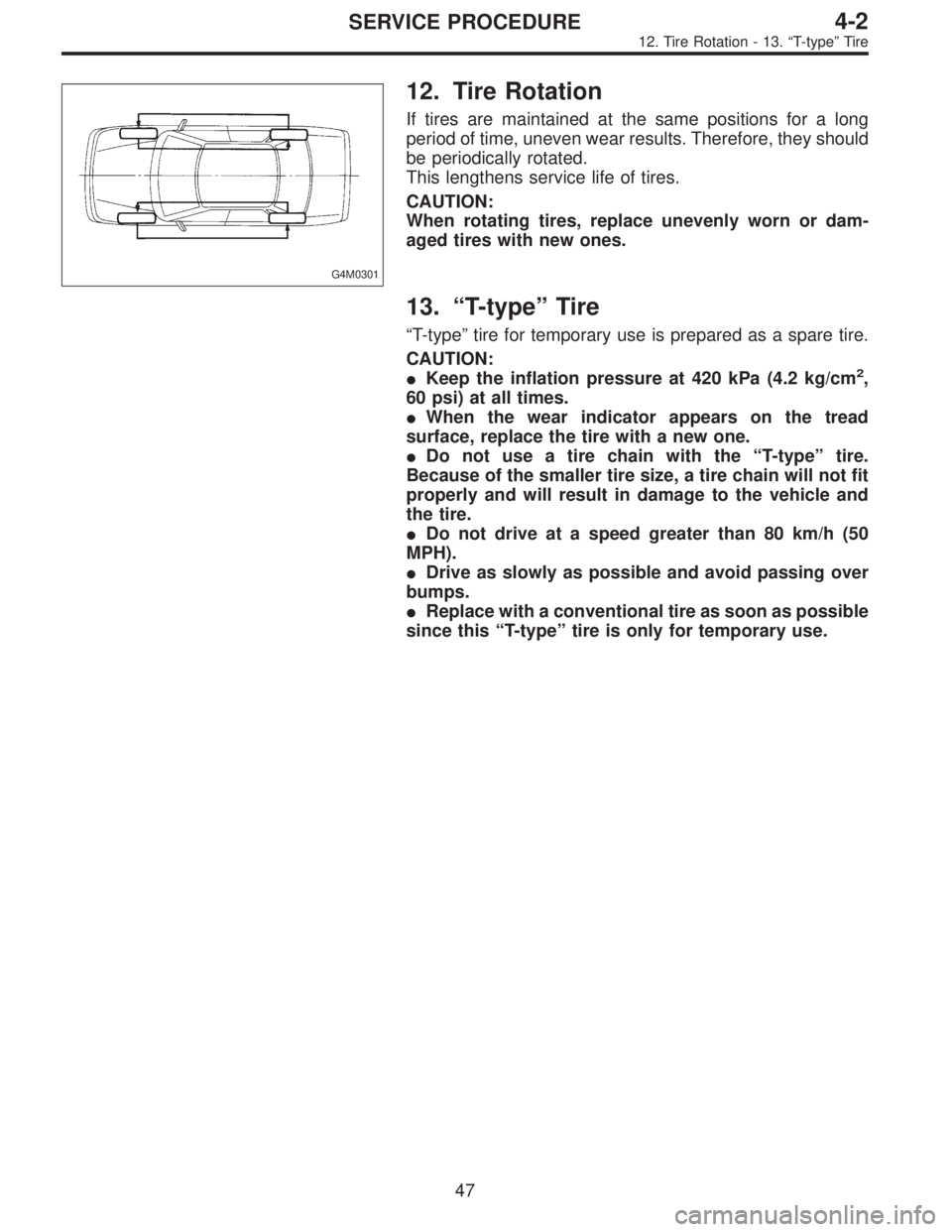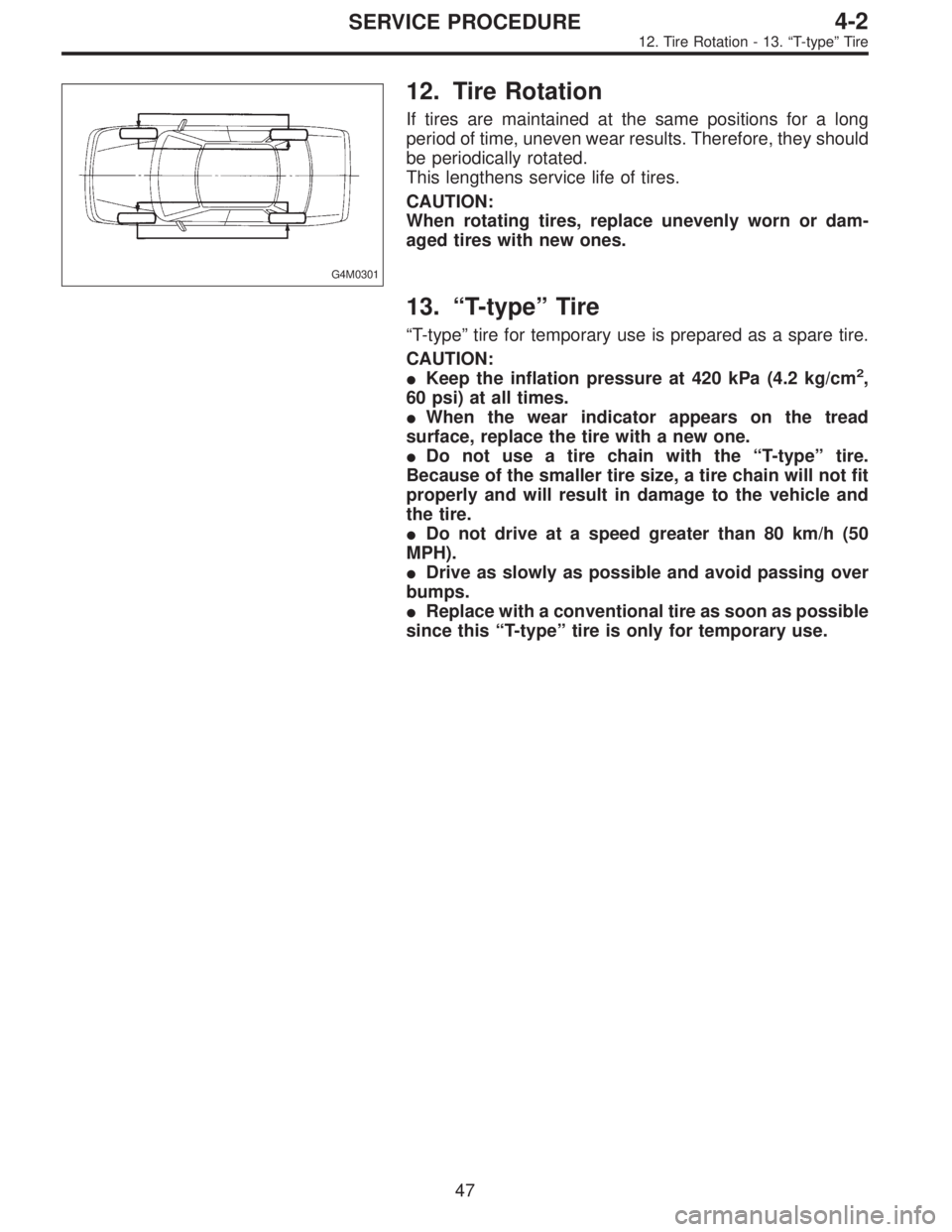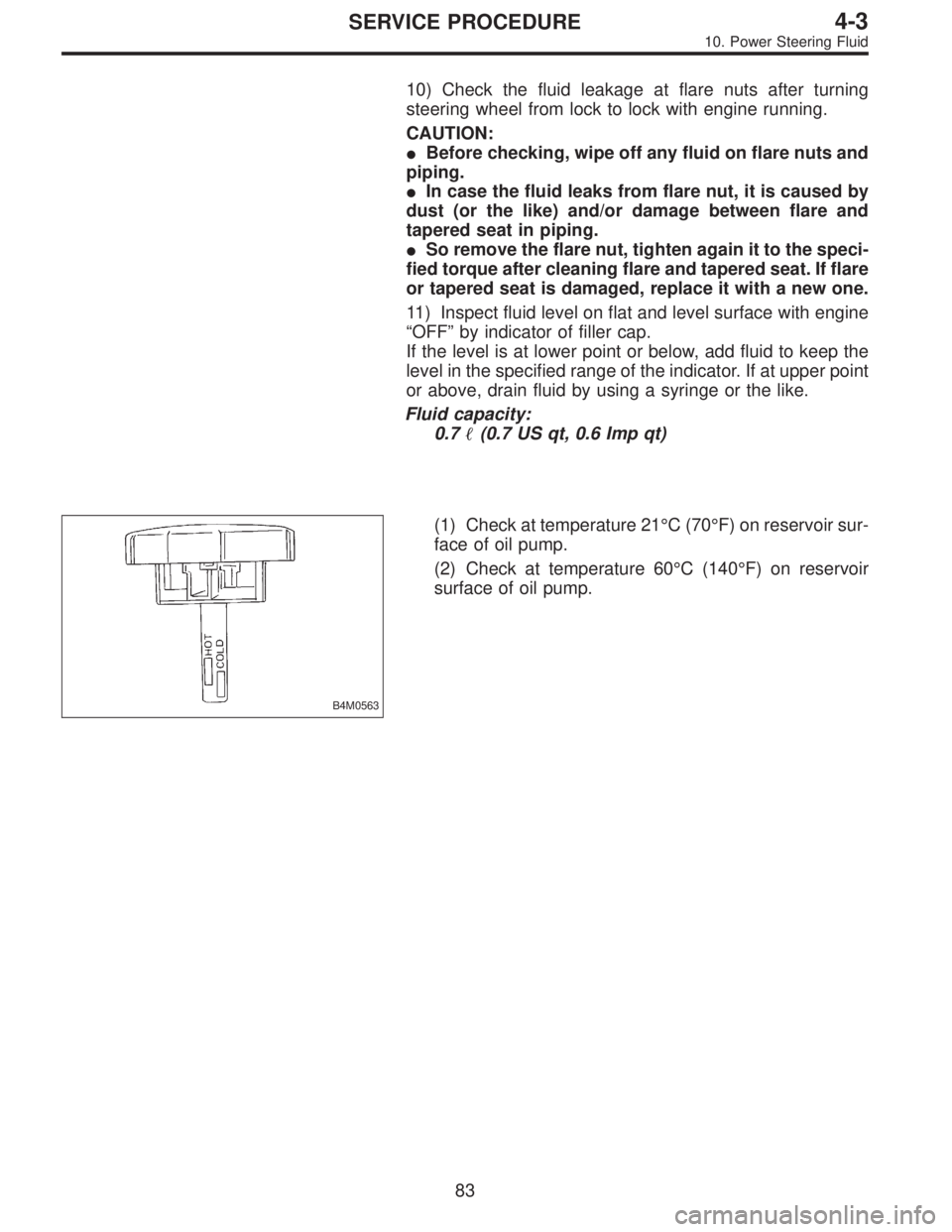Page 473 of 2248
G3M0703
4) Remove the screws to take off the plate from the body.
G3M0704
B: DISASSEMBLY
1) Remove grip from selector lever.
2) Remove indicator from plate.
B3M0346A
3) Remove the following parts from the grip.
�
1Button
�
2Spring
G3M0706
4) Remove shift-lock solenoid and“P”position switch.
G3M0707
5) Remove the bolt to take off the selector lever from the
plate and remove selector lever from the plate.
12
3-3SERVICE PROCEDURE
2. Automatic Transmission
Page 475 of 2248
G3M0710
4) Assemble detention spring, shift-lock solenoid and“P”
position switch.
G3M0711
5) Adjust the position of shift-lock plate and solenoid.
Then, tighten bolts.
G3M0712
6) Assemble indicator to the plate
Tightening torque:
4.4±1.5 N⋅m (0.45±0.15 kg-m, 3.3±1.1 ft-lb)
B3M0347A
7) Assemble the following parts to the grip.
CAUTION:
Apply grease on sliding surfaces of the following
parts.
�
1Button
�
2Spring
G3M0714
8) Assemble the grip to the selector lever.
14
3-3SERVICE PROCEDURE
2. Automatic Transmission
Page 476 of 2248
9) After completion of fitting, transfer selector lever to
range“P”∼“1”, pressing the button of the grip; then check
whether the indicator and select lever agree, whether the
pointer and position mark agree and what the operating
force is.
G3M0703
E: INSTALLATION
1) Mount the selector lever onto the vehicle body.
2) Tighten the six bolts to install the selector lever to the
vehicle body.
Tightening torque:
4.5±1.5 N⋅m (0.45±0.15 kg-m, 3.3±1.1 ft-lb)
G3M0702
3) Connect connectors and install rear console, center
console and instrument console.
G3M0715
4) Set location of selector lever at“N”position.
5) Set location of selector arm installed on the transmis-
sion body at“N”position.
B3M0416A
6) Pass inner cable through selector arm pin and then
connect it using a washer and snap pin.
7) Attach outer cable to plate on transmission case with
the bolts.
Tightening torque:
18±5 N⋅m (1.8±0.5 kg-m, 13.0±3.6 ft-lb)
15
3-3SERVICE PROCEDURE
2. Automatic Transmission
Page 609 of 2248
B4M0051
7. Full Wheel Cap
A: REMOVAL
Pry off the full wheel cap with a wheel cap remover inserted
between openings in the cap.
B: INSTALLATION
Align the valve hole in the wheel cap with the valve on the
wheel and secure the wheel cap by tapping four points by
hand.
8. Steel Wheel and Tire
1) Deformation or damage on the rim can cause air leak-
age. Check the rim flange for deformation, crack, or
damage, and repair or replace as necessary.
2) Take stone, glass, nail etc. off the tread groove.
G4M0297
3) Replace tire:
�when large crack on side wall, damage or crack on
tread is found.
�when the“tread wear indicator”appears as a solid
band across the tread.
CAUTION:
�When replacing a tire, make sure to use only the
same size, construction and load range as originally
installed.
�Avoid mixing radial, belted bias or bias tires on the
vehicle.
44
4-2SERVICE PROCEDURE
7. Full Wheel Cap - 8. Steel Wheel and Tire
Page 610 of 2248
B4M0051
7. Full Wheel Cap
A: REMOVAL
Pry off the full wheel cap with a wheel cap remover inserted
between openings in the cap.
B: INSTALLATION
Align the valve hole in the wheel cap with the valve on the
wheel and secure the wheel cap by tapping four points by
hand.
8. Steel Wheel and Tire
1) Deformation or damage on the rim can cause air leak-
age. Check the rim flange for deformation, crack, or
damage, and repair or replace as necessary.
2) Take stone, glass, nail etc. off the tread groove.
G4M0297
3) Replace tire:
�when large crack on side wall, damage or crack on
tread is found.
�when the“tread wear indicator”appears as a solid
band across the tread.
CAUTION:
�When replacing a tire, make sure to use only the
same size, construction and load range as originally
installed.
�Avoid mixing radial, belted bias or bias tires on the
vehicle.
44
4-2SERVICE PROCEDURE
7. Full Wheel Cap - 8. Steel Wheel and Tire
Page 615 of 2248

G4M0301
12. Tire Rotation
If tires are maintained at the same positions for a long
period of time, uneven wear results. Therefore, they should
be periodically rotated.
This lengthens service life of tires.
CAUTION:
When rotating tires, replace unevenly worn or dam-
aged tires with new ones.
13.“T-type”Tire
“T-type”tire for temporary use is prepared as a spare tire.
CAUTION:
�Keep the inflation pressure at 420 kPa (4.2 kg/cm
2,
60 psi) at all times.
�When the wear indicator appears on the tread
surface, replace the tire with a new one.
�Do not use a tire chain with the“T-type”tire.
Because of the smaller tire size, a tire chain will not fit
properly and will result in damage to the vehicle and
the tire.
�Do not drive at a speed greater than 80 km/h (50
MPH).
�Drive as slowly as possible and avoid passing over
bumps.
�Replace with a conventional tire as soon as possible
since this“T-type”tire is only for temporary use.
47
4-2SERVICE PROCEDURE
12. Tire Rotation - 13.“T-type”Tire
Page 616 of 2248

G4M0301
12. Tire Rotation
If tires are maintained at the same positions for a long
period of time, uneven wear results. Therefore, they should
be periodically rotated.
This lengthens service life of tires.
CAUTION:
When rotating tires, replace unevenly worn or dam-
aged tires with new ones.
13.“T-type”Tire
“T-type”tire for temporary use is prepared as a spare tire.
CAUTION:
�Keep the inflation pressure at 420 kPa (4.2 kg/cm
2,
60 psi) at all times.
�When the wear indicator appears on the tread
surface, replace the tire with a new one.
�Do not use a tire chain with the“T-type”tire.
Because of the smaller tire size, a tire chain will not fit
properly and will result in damage to the vehicle and
the tire.
�Do not drive at a speed greater than 80 km/h (50
MPH).
�Drive as slowly as possible and avoid passing over
bumps.
�Replace with a conventional tire as soon as possible
since this“T-type”tire is only for temporary use.
47
4-2SERVICE PROCEDURE
12. Tire Rotation - 13.“T-type”Tire
Page 699 of 2248

10) Check the fluid leakage at flare nuts after turning
steering wheel from lock to lock with engine running.
CAUTION:
�Before checking, wipe off any fluid on flare nuts and
piping.
�In case the fluid leaks from flare nut, it is caused by
dust (or the like) and/or damage between flare and
tapered seat in piping.
�So remove the flare nut, tighten again it to the speci-
fied torque after cleaning flare and tapered seat. If flare
or tapered seat is damaged, replace it with a new one.
11) Inspect fluid level on flat and level surface with engine
“OFF”by indicator of filler cap.
If the level is at lower point or below, add fluid to keep the
level in the specified range of the indicator. If at upper point
or above, drain fluid by using a syringe or the like.
Fluid capacity:
0.7�(0.7 US qt, 0.6 Imp qt)
B4M0563
(1) Check at temperature 21°C (70°F) on reservoir sur-
face of oil pump.
(2) Check at temperature 60°C (140°F) on reservoir
surface of oil pump.
83
4-3SERVICE PROCEDURE
10. Power Steering Fluid